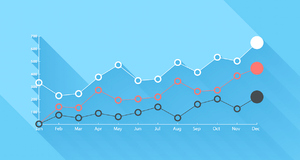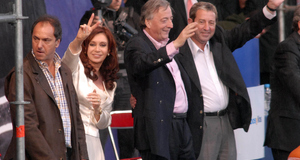Perón and the People: Democracy and Authoritarianism in Juan Perón's Argentina
By
2013, Vol. 5 No. 02 | pg. 1/2 | »
KEYWORDS:
Although the ‘Perónist Years’ amounted to a little less than a decade, Juan Perón’s presidency had long-lasting effects. As historians Matthew B. Karush and Oscar Carosa write, “Perón transformed Argentina’s economy, its social structure, and its political culture in ways that continue to shape Argentine reality.”1 Perón’s political actions and his legacy, however, cannot be easily characterized; Perón was a populist politician who provided for and was supported by the masses, yet his regime was in many ways authoritarian. In this paper, I analyze the tensions between democracy and authoritarianism in Juan Perón’s Argentina. Perón exploited the poor to get and to stay in power, and enacted progressive reforms, but he did so in ways that were calculated to maintain his control of the country. Perón’s political benefits were given through a system of patronage, not rights, and he restricted political expression if it was not in his favor. At the same time, by recognizing industrial workers as legitimate citizens and by uniting and then supporting them as a social and political class, Perón brought the urban masses into politics and paved the way for increased political participation. A brief overview of the context in which Perón came to power is critical to any analysis of his regime. During the Década Infame (the Infamous Decade, which actually spanned a 13 year period, from 1930 to 1943), Argentina was hit especially hard by the global Great Depression. The government at the time, “a conservative and pro-aristocratic coalition known as the Concordancia,” protected the fortunes of the rich but did nothing to alleviate the poor people’s suffering.2 Technically, democratic institutions were in place, but in practice, the lower classes were excluded from politics.3 Labor laws were often unenforced and the labor movement was “divided and weak.”4 When a military junta took over in 1943, Perón made major changes. He was put in charge of the National Labor Department, which he soon after remade into the National Department of Labor and Supply.5 Perón saw that the needs of working class Argentineans were largely ignored by the government at the same time that the country’s industrial workforce was increasing rapidly.6 Other politicians were uninterested in the lower classes, but Perón recognized and capitalized upon this incredible political opportunity. By “using both the carrot and the stick,” he built a broad base of supporters who then fought for his release from jail and then voted him into the presidency.7Both Argentines and outsiders have harshly critiqued Peron’s ‘populist’ rise to power; historians often analyze Perón’s relationship to the Argentine people “in terms of notions such as manipulation, passivity, cooptation, and not uncommonly, irrationality.”8 Sociologist Gino Germani saw Perón’s followers as “the passive, manipulated urban masses which result from an incomplete modernisation process,” while Marxist theorists have painted Peronists as naïve proletarians under the control of self-interested demagogues and strong-armed union bosses.9 “It is quite clear that Perón exploited the working class for the sake of his own ambitions,” Peter Smith writes, but then that begs the question, why did so many industrial workers support him?10 It certainly seems ironic that Perón was given the power to “install his undemocratic regime” in the February 1946 election, which Smith characterizes as the “most scrupulous and ‘democratic’ election in Argentine history.”11 Peron’s popularity can be explained at least in part by an assessment of the many benefits he gave to the people; Perón did not come to power through propaganda alone. As head of the military government’s labor department, Perón gained industrial workers’ support through unprecedented initiatives. For example, he changed labor laws to give all workers paid holidays and vacations, to limit work hours in some industries, and to mandate better working conditions.12 He also established a system of government-affiliated unions to fight for workers’ rights, and when the unions and industry management clashed, Perón intervened and insisted that the unions’ claims be met.13 In one instance, in late April of 1945, Perón mandated that packinghouse management rehire thousands of workers that they had recently suspended. For some factories, this was not economically possible, so Perón agreed that the state would pay these workers’ salaries instead. To keep just this one promise, the military government doled out nearly ten million pesos.14 Perón was not the president then, but he was still able to use his cabinet position within the military regime to gain personal popularity. Because he worked within an anti-labor government, his bold actions stood out; “everyone knew that he – rather than the government, the military, or a political party – was personally responsible for labor’s gains.”15 Historically, also, Perón’s actions were unparalleled. Socialist leaders had tried to improve workeing conditions under the Concordancia, but their efforts were quashed and democratic institutions were discredited. Perón came to power at the perfect time, when the working classes wanted increased political power and he could provide it. These progressive policies made him incredibly popular; “his success in behalf of urban lower-class groups won him their support and even devotion.”16 Despite the popularity of theories about passivity and manipulation, then, the power dynamic between Perón and the people was not entirely one-sided. Perón manipulated industrial workers to gain his own power, but he gave them concrete benefits in return for their political support. Unlike the ‘democratic’ institutions that had given them nothing in the past, Argentinean workers soon learned that “Perón cumple” (Perón delivers).17 As Latin American Studies scholar James W. McGuire writes, “The strength of the labor movement gave Perón a formidable power resource with which to propel himself to the presidency, but it also gave workers and union leaders the capacity to extract real benefits from him.”18 Perón made good on his promises and he did so at rapid speed;19 one writer estimated that between 1956 and 1959, workers’ wages doubled.20 Perón did more than just dole out money and material goods, however. In addition to higher wages, improved working conditions and expanded benefits, Perón gave workers intangible, but important ideas to hold onto.21 Whereas in the 1930s, workers were treated like animals and were told they “weren’t worth anything,” and in the 1940s, even their own political parties spoke down to them, assuming that they constituted “a morally and intellectually inferior audience,” 22 Perón gave the descamisados (the poor and downtrodden – literally, ‘the shirtless’) a strong sense of dignity and self-respect.23 Even the term ‘decamisado’ is an excellent example of this. The word had previously been used as an epithet to signify the inferiority of the lower class, but in Peronism, it was inverted; Perón reclaimed it as a declaration of self-worth and pride. In his speeches, Perón praised the descamisados, saying they were the “true Argentine people,” and he spoke publically about the problems that they had previously been told were private affairs.24 Perón insisted that social inequity and other ‘private’ issues could and should be addressed in the political sphere. Prior to Perón, the Argentine state “had recognised the political existence of workers as individual, atomised citizens with formal equality of rights in the political arena, at the same time as it had denied, or hindered, its constitution as a social class at the political level … it had denied the legitimacy of transferring the social identity built around conflict at the social level to the political arena.”25 But of Peronism, Matt Karush writes, “The movement’s transformative impact on Argentine politics as well as its impressive longevity reflect the fact that it provided workers with much more than a higher standard of living; it offered them both an identity and a convincing interpretation of the society in which they lived.”26 Perón not only affirmed the right of individual Argentineans to participate in politics, but he also “bequeathed an immensely increased sense of class solidity and potential national importance to the working class.”27 It is important to note, though, that this class did not exist – or at least, it does not have the same meaning and strength – before Perón came to power. “The working class did not come to Peronism already fully formed and simply adopt Peronism and its rhetoric as the most conveniently available vehicle to satisfy its material needs,” historian Daniel James writes. “In an important sense the working class was constituted by Perón; its self-identification as a social and political force within national society was, in part at least, constructed by Perónist political discourse which offered workers viable solutions for their problems and a credible vision of Argentine society and their role within it.”28 James says this was a two-way process: “if the working class was partly constituted by Peronism,” he writes, “than Peronism was itself also in part a creation of the working class.”29 Perón used the people for his own political power, and they used Peronism to articulate and achieve their own political goals. Through his provision of concrete benefits, his acknowledgement of workers’ problems and his recognition of their individual and collective rights and interests, Perón became incredibly popular among the Argentine people, but he was still more interested in dictatorship than democracy. “He never hid his admiration for Mussolini or even for Hitler,” Argentinian professor Mariano Ben Plotkin writes.30 Perón shared their commitment to the politicization of private life and looked to other authoritarian leaders as a model. Plotkin says, “For Perón, as for the European dictators, the state had to occupy all spaces of social life, and nothing was to be left outside its reach. At the end of the regime, there was a clear tendency toward the establishment of a semicorporative state, which shared many characteristics with the interwar European totalitarian regimes.”31 Although he continued to use democratic rhetoric to justify his rule, Perón rigged elections, arrested his political opponents, censored the media, rewrote students’ textbooks and increased the power of the executive branch.32Continued on Next Page » Suggested Reading from Inquiries Journal
Inquiries Journal provides undergraduate and graduate students around the world a platform for the wide dissemination of academic work over a range of core disciplines. Representing the work of students from hundreds of institutions around the globe, Inquiries Journal's large database of academic articles is completely free. Learn more | Blog | Submit Latest in History |


















